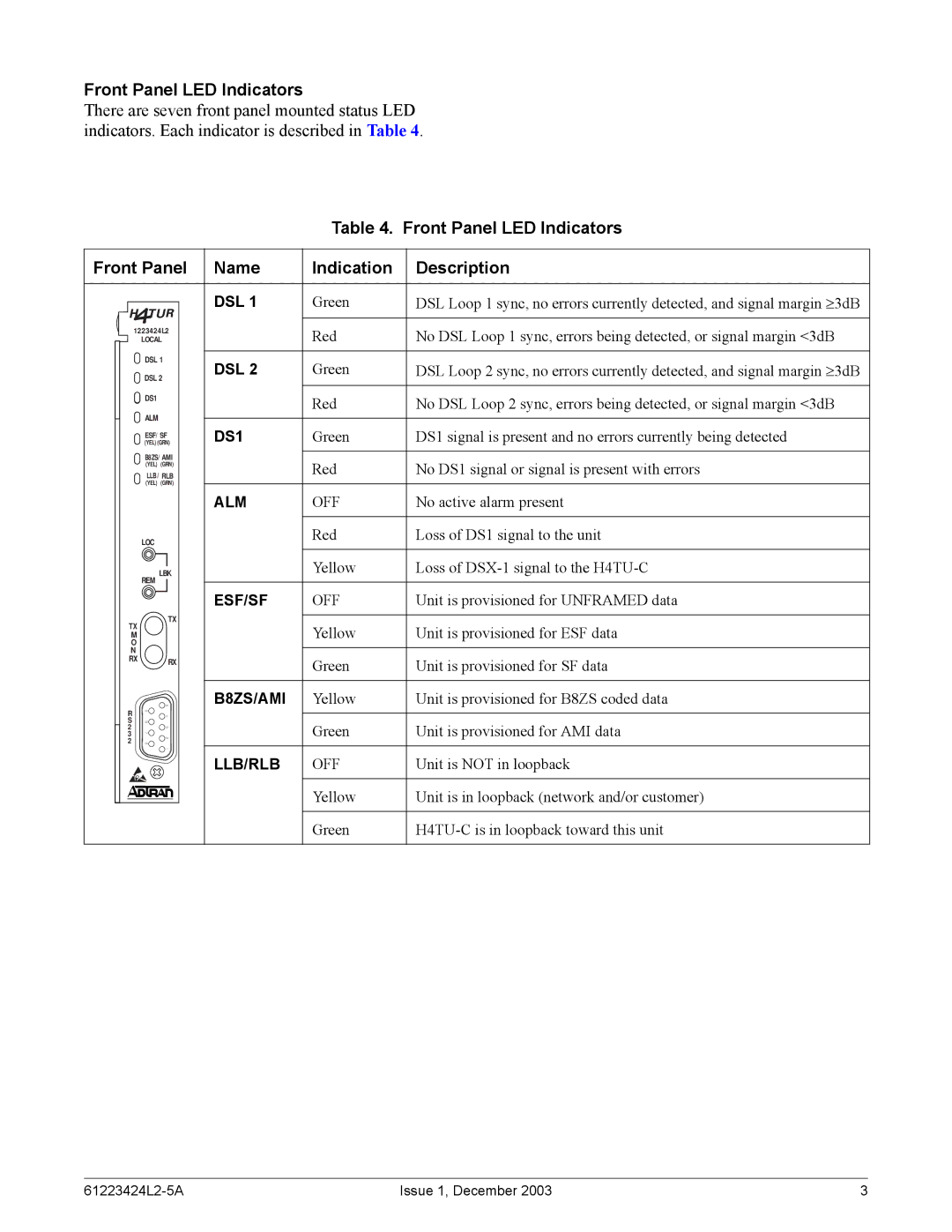T200 H4TU-R specifications
The ADTRAN T200 H4TU-R is a versatile and advanced telecommunications device designed for high-speed data transmission and enhanced connectivity. It serves primarily in carrier-grade applications, enabling service providers to deliver reliable broadband services to their customers. This device integrates multiple features and technologies that ensure optimal performance and flexibility in various networking environments.One of the key features of the T200 H4TU-R is its ability to support high-speed data services over existing copper or fiber infrastructures. It utilizes G.SHDSL technology, which allows for symmetrical data rates ranging from 192 kbps to 5.7 Mbps, making it suitable for both enterprise and residential applications. This capability is essential for businesses requiring dedicated bandwidth for applications like VoIP, video conferencing, and cloud services.
The T200 H4TU-R also supports various interface options, including Ethernet over G.SHDSL and T1/E1 lines, which provides compatibility with multiple legacy systems. This flexibility extends the useful life of existing networks while enabling a smoother transition to newer technologies. The device features dual Gigabit Ethernet ports, allowing for easy integration into modern networking setups while facilitating network redundancy and load balancing.
Built with scalability in mind, the T200 H4TU-R can accommodate the growing demands of service providers. Its management capabilities are further enhanced by support for SNMP and Web-based interfaces, enabling operators to monitor network performance and promptly address any issues that arise.
Another significant characteristic of the T200 H4TU-R is its robust error correction capabilities, which ensure data integrity and minimize the risk of data loss during transmission. It employs advanced technologies such as H4 (High Capacity) coding and interleaved mode, effectively increasing data rates while maintaining reliability.
For installations, the device offers versatile powering options, including Power over Ethernet (PoE), which simplifies deployment while reducing cabling requirements. Additionally, its compact form factor enhances space efficiency in network closets.
In summary, the ADTRAN T200 H4TU-R delivers a powerful combination of speed, reliability, and flexibility. Its advanced G.SHDSL technology, support for various interface types, robust error correction, and management capabilities make it an ideal choice for service providers looking to enhance their broadband offerings while ensuring future scalability and performance.

